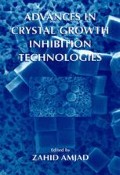Conclusion
The copper ion is a well known and effective algicide, but has some performance issues related to known swimming pool water parameters. The various performance tests for copper persistence, chlorine stability in the presence of copper, stain propensity, and acute toxicity demonstrate that the Cu-PA is an improvement over the Cu-TEA formula and copper sulfate alone, These desirable performance improvements should allow people to use Cu-PA in conjunction with chlorine as a swimming pool algae treatment with reduced risk of surface staining.
Access this chapter
Tax calculation will be finalised at checkout
Purchases are for personal use only
Preview
Unable to display preview. Download preview PDF.
References
B. Domogalla, Killing algae in water with copper alkanolamine salts. U. S. Patent No. 2,734,028. (1956).
R.K. Raman and B.C. Cook, Guidelines for applying copper sulfate as an algicide: Lake Loami field Study, Illinois Dept. of Energy and Natural Resources. (1988).
P.K. Mitchell, The Proper Management of Pool and Spa Water, Hydrotech Chemical Corp., Marietta, Ga (1988).
D.E. Seymour, G.A. Seymour and M.J. Jaber, Method of preparing a copper complex for use as an algaecide. U. S. Patent No. 4,324,578. (1982).
J.A. Swader and W.Y. Chan, Citric acid enhancement of copper solubility and toxicity in bicarbonate solutions, Pest. Biochem. Phys. 5:405 (1975).
S.K. Chatterjee, F.H. Rajabi, B.V. Farahani, and N. Chatterjee, Investigations of polyelectrolyte-transition metal ion association in mixed solvents, Polymer Bull. 27: 179 (1991).
W.M. Hann and S.T. Robertson, Control of iron and silica with polymeric dispersants, International Water Conference Technical Paper Number IWC-90-29. (1990).
I. Brase and J. Belcher, Laboratory development of novel multi-functional polymers for cooling water use, Cooling Tower Institute Technical Paper Number TP91-09. (1991).
R.W. Zuhl and Z. Amjad, The role of polymers in water treatment applications and criteria for comparing alternatives, Association of Water Technologies Technical Paper A WT-F-93. (1993).
Environmental Protection Agency, Guidelines for registering Pesticides in the U.S. (Pesticides Assessment Guidelines, Subdivision F, Hazards Evaluation: Human and Domestic Animals, Section 81-1.
Environmental Protection Agency, Guidelines for registering Pesticides in the U.S. (Pesticides Assessment Guidelines, Subdivision F, Hazards Evaluation: Human and Domestic Animals, Section 81-2.
Environmental Protection Agency, Guidelines for registering Pesticides in the US. (Pesticides Assessment Guidelines, Subdivision F, Hazards Evaluation: Human and Domestic Animals, Section 81-4.
Environmental Protection Agency, Guidelines for registering Pesticides in the US. (Pesticides Assessment Guidelines, Subdivision F, Hazards Evaluation: Human and Domestic Animals, Section 81-5.
Environmental Protection Agency, Pesticide Label Review Manual (1996).
Author information
Authors and Affiliations
Editor information
Editors and Affiliations
Rights and permissions
Copyright information
© 2002 Kluwer Academic Publishers
About this chapter
Cite this chapter
Garris, J.P. (2002). An Algicide Using Anionic Polymers to Sequester and Stabilize Copper in an Oxidizing Aqueous Environment. In: Amjad, Z. (eds) Advances in Crystal Growth Inhibition Technologies. Springer, Boston, MA. https://doi.org/10.1007/0-306-46924-3_15
Download citation
DOI: https://doi.org/10.1007/0-306-46924-3_15
Publisher Name: Springer, Boston, MA
Print ISBN: 978-0-306-46499-7
Online ISBN: 978-0-306-46924-4
eBook Packages: Springer Book Archive

